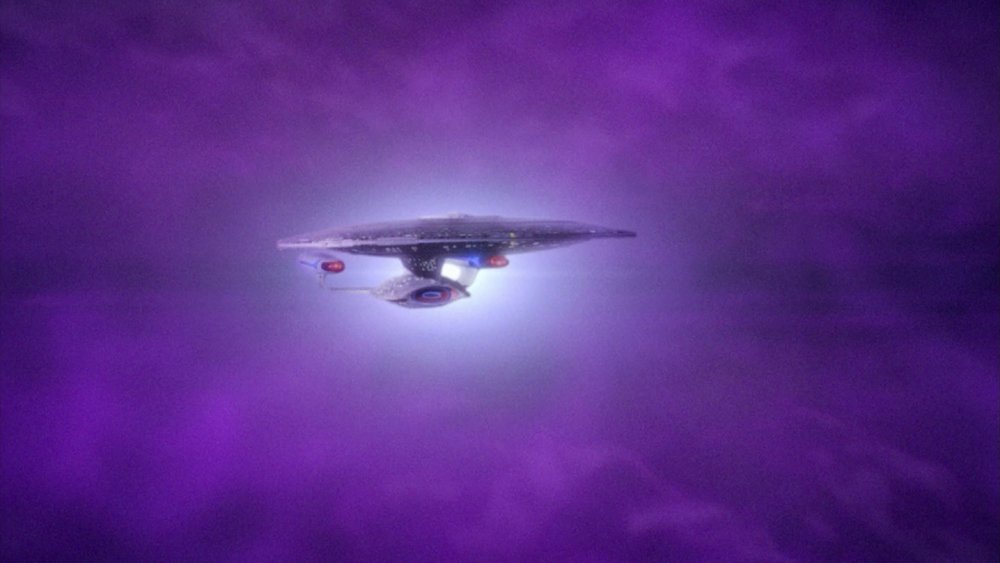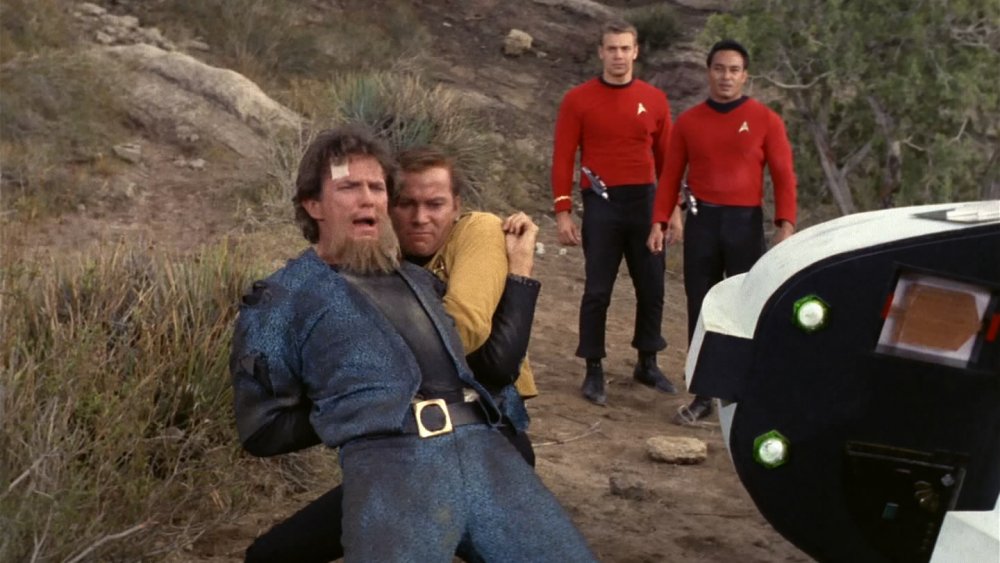Here's What Might Have Caused 'The Burn' On Star Trek: Discovery
Going into season 3 of Star Trek: Discovery, we knew a few things: We knew that our heroes were traveling nearly a millennia into the future, putting them further out in time than Trek has ever gone, we knew that Starfleet would not be what it once was when they arrived, and we knew that something called "The Burn" had happened that changed everything. One of the biggest questions fan had is: What is the Burn?
In Discovery's latest premiere "That Hope Is You, Part 1" we got our answer, at least partly. The episode features Michael Burnham (Sonequa Martin-Green) struggling to find her place in an uncertain future. Burnham finds help through Cleveland "Book" Booker (David Ajala), a courier of sorts. It's also through Book that Michael finds out a little about the Burn. "The Burn is the day the galaxy took a hard left," Book tells Michael. "Dilithium: One day most of it just went boom."
If you don't know, dilithium is the crystalline compound that makes warp travel possible. There are other modes of warp-like travel (more on that later), but Starfleet vessels were all dilithium-propelled — so when dilithium went away, Starfleet essentially went away with it.
Why did dilithium blow up, and how? Here are some theories to help you navigate Discovery's latest season-long mystery.
Warp travel was already on borrowed time
Within the Star Trek canon, warp travel was already on borrowed time. In the season 7 episode of Star Trek: The Next Generation "Force of Nature," it was revealed that going to warp in the same space over and over again was analogous with walking over the same spot of carpet for years — eventually, you'll wear a hole in it. Wearing a hole in space means creating a rift and causing a destructive spatial rupture. In short, it was concluded that warp travel would have to change, if not be stopped entirely.
Data (Brent Spiner) showed a study in "Force of Nature" that suggests things could get significantly worse within 40 years of the episode's air date. Star Trek: Discovery is set centuries later. Since dilithium still existed until recently, we have to assume that either a solution was found or there are a lot of ruptures in space everywhere. It is possible that the Hekarans (who discovered this flaw with warp travel) are somehow responsible for the destruction of most dilithium. Perhaps this was an act of terrorism. Regardless, this piece of Trek lore is something to keep in the back of your mind as Discovery's third season progresses.
Is Burnham the Burn?
Star Trek: Discovery itself tends to have a very "Michael did it" mentality. While Star Trek is essentially an ensemble franchise, Burnham is very much at the center of Discovery's narrative: She starts the war with the Klingons, she plays an enormous role in dealing with the parallel universe, and she, ultimately, is the Red Angel in season 2 that sets the Discovery on her path and gets her into the far-flung future. In short, it's almost always about Michael.
Discovery's third season opens on an episode that is entirely focused on Michael, because the rest of Discovery has yet to arrive in the future. As you'll see in the coming episodes, that will have an impact on Burnham in more ways than one, but we already see that she has a weight off of her shoulders — she spent years acting like everything is her fault, but in the future she seems to be free of that.
The name "Burnham" does, however, have the word "burn" in it, so we're not ruling out the possibility that Michael's travel across time as the Red Angel is responsible for the destruction of all active dilithium. If warp travel can cause rifts in space and time, who knows what Michael Burnham traveling ahead a millennium may have done?
The Alternative (Factor) Theory
There are a lot of possible culprits for the Burn: The Q Continuum, the Borg, Control, or even just random chance. There is, however, one other classic Star Trek story worth invoking while we're listing off possible explanations for the Burn.
In the Star Trek: The Original Series episode "The Alternative Factor," Kirk (William Shatner) and Spock (Leonard Nimoy) meet a man named Lazarus on an uncharted planet who seems to blink in and out of existence, looking slightly different each time. Lazarus (Robert Brown) seems to have a strange ability: He can drain the energy of any dilithium with which he comes in contact.
It turns out that not only is Lazarus a time traveler, but there are also two of him, Lazarus-A and Lazarus-B. If the two come into direct contact, it would cause untold destruction. Fortunately, Kirk and Spock are able to trap both versions of Lazarus outside of time, caught in an eternal struggle, but unable to harm anyone — unless, of course, they ever escaped back into our world.
Considering that Discovery spent part of its second season retelling the story of Christopher Pike (Anson Mount), it stands to reason that Lazarus could make a return. He (or they) might even be the real reason behind the Burn.



